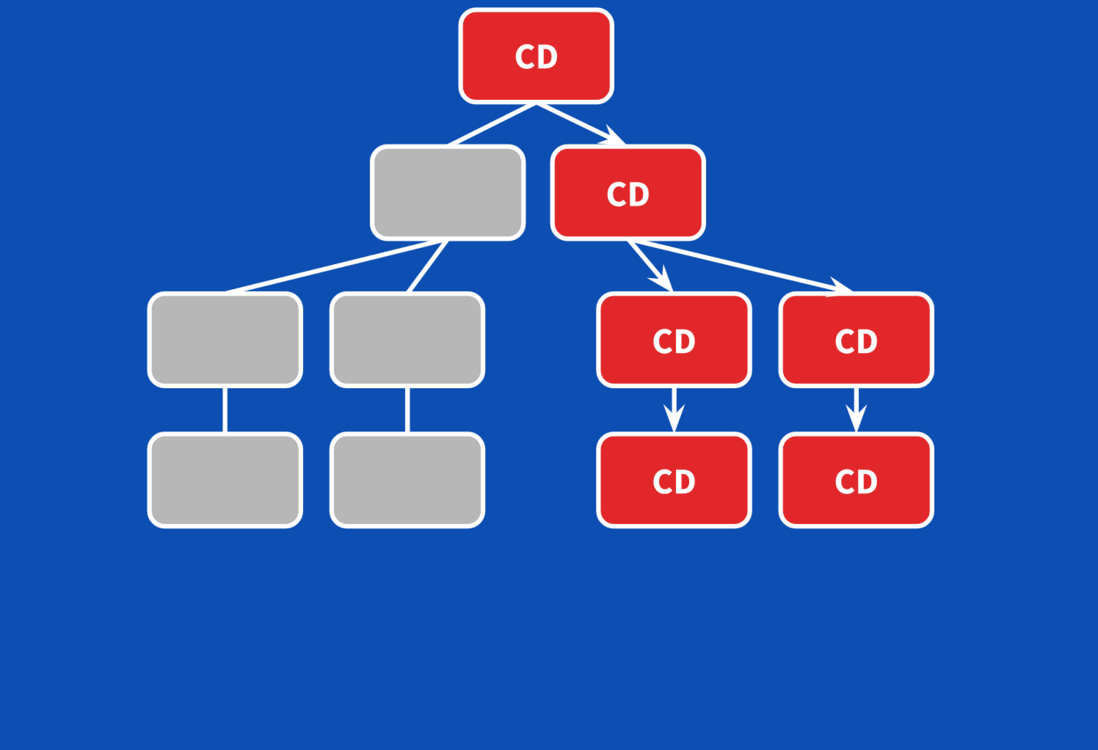在 Angular 应用程序中,包含了我们通过 Angular 提供的 API 实现的自定义指令。这些自定义指令对浏览器来说,都是无法识别的,因此每个 Angular 应用程序在运行前,都需要经历一个编译的阶段。
在 Angular 2 中有两种编译模式:
JIT - Just-In-Time
AOT - Ahead-Of-Time
JIT - Just-In-Time
Just-in-Time 编译模式开发流程
使用 TypeScript 开发 Angular 应用
运行 tsc 编译 TypeScript 代码
使用 Webpack 或 Gulp 等其他工具构建项目,如代码压缩、合并等
部署应用
应用部署后,当用户通过浏览器访问我们应用的时候,她将经历以下步骤(非严格 CSP):
下载应用相关的资源,如 JavaScript 文件、图片、样式资源
Angular 启动
Angular 进入 JiT 编译模式,开始编译我们应用中的指令或组件,生成相应的 JavaScript 代码
应用完成渲染
AOT - Ahead-Of-Time
Ahead-Of-Time 编译模式开发流程
使用 TypeScript 开发 Angular 应用
-
运行 ngc 编译应用程序
使用 Angular Compiler 编译模板,一般输出 TypeScript 代码
运行 tsc 编译 TypeScript 代码
使用 Webpack 或 Gulp 等其他工具构建项目,如代码压缩、合并等
部署应用
应用部署后,相比于 JIT 编译模式,在 AOT 模式下用户访问我们的应用,只需经历以下步骤:
下载应用相关的资源,如 JavaScript 文件、图片、样式资源
Angular 启动
应用完成渲染
JIT vs AOT
Just-In-Time (JIT) compilation
Ahead-Of-Time (AOT) compilation
| 特性 | JIT | AOT |
|---|---|---|
| 编译平台 | (Browser) 浏览器 | (Server) 服务器 |
| 编译时机 | Runtime (运行时) | Build (构建阶段) |
| 包大小 | 较大 | 较小 |
| 执行性能 | - | 更好 |
| 启动时间 | - | 更短 |
除此之外 AOT 还有以下优点:
在客户端我们不需要导入体积庞大的 angular 编译器,这样可以减少我们 JS 脚本库的大小
使用 AOT 编译后的应用,不再包含任何 HTML 片段,取而代之的是编译生成的 TypeScript 代码,这样的话 TypeScript 编译器就能提前发现错误。总而言之,采用 AOT 编译模式,我们的模板是类型安全的。
另外感兴趣的读者,可以使用 source-map-explorer 工具查看不同模式下生成的 bundle JS 文件中各种 JS 资源的占比。
AOT详解
app.component.html
<button (click)="toggleHeading()">Toggle Heading</button>
<h1 *ngIf="showHeading">Hello {{name}}</h1>
<h3>List of Heroes</h3>
<div *ngFor="let hero of heroes">{{hero}}</div>app.component.ts
import { Component } from '@angular/core';
@Component({
moduleId: module.id,
selector: 'my-app',
templateUrl: './app.component.html'
})
export class AppComponent {
name: string = 'Angular';
showHeading = true;
heroes = ['Magneta', 'Bombasto', 'Magma', 'Tornado'];
toggleHeading() {
this.showHeading = !this.showHeading;
}
}安装 npm 依赖:
npm install @angular/compiler-cli @angular/platform-server --save在项目根目录新增 tsconfig-aot.json 配置文件,内容如下:
{
"compilerOptions": {
"target": "es5",
"module": "es2015",
"moduleResolution": "node",
"sourceMap": true,
"emitDecoratorMetadata": true,
"experimentalDecorators": true,
"lib": ["es2015", "dom"],
"noImplicitAny": true,
"suppressImplicitAnyIndexErrors": true
},
"files": [
"src/app/app.module.ts",
"src/main.ts"
],
"angularCompilerOptions": {
"genDir": "aot",
"skipMetadataEmit" : true
}
}执行 AoT 编译:
node_modules/.bin/ngc -p tsconfig-aot.json
"node_modules/.bin/ngc" -p tsconfig-aot.json # Windows 用户
命令成功运行后,在根目录下会自动生成 aot 目录,接下来我们来研究一下目录中生成的文件:
*.component.ngfactory.ts
此类文件内包含以下定义:
View_{COMPONENT}_Host{COUNTER}- 内部宿主组件View_{COMPONENT}{COUNTER}- 内部组件
上面的 {COMPONENT} 表示组件关联的类名称,{COUNTER} 是一个无符号整数。
它们都继承于 AppView 并实现以下方法:
createInternal - 用于渲染组件
destroyInternal - 用于执行清理操作,如移除事件监听、销毁内嵌视图
detectChangesInternal - 用于执行变化检测
其中 detectChangesInternal 方法中包含了 JavaScript VM Friendly 的代码,现在我们来看一下具体示例:
<h1 *ngIf="showHeading">Hello {{name}}</h1>该模板编译后,detectChangesInternal 方法中的代码如下:
detectChangesInternal(throwOnChange:boolean):void {
// 计算h1标签中文本元素的内容
const currVal_2:any = import3.inlineInterpolate(1,'Hello '
,this.parentView.context.name,'');
// 判断新值与旧值是否相等,若不相等则更新文本的内容,同时设置旧值为当前值
if (import3.checkBinding(throwOnChange,this._expr_2,currVal_2)) {
this.renderer.setText(this._text_1,currVal_2);
this._expr_2 = currVal_2;
}
}接下来我们来看一下 Angular 1.x 中简易版 $digest :
// $scope.$watch('name', function(newValue, oldValue) {})
Scope.prototype.$watch = function (exp, fn) {
'use strict';
this.$$watchers.push({
exp: exp,
fn: fn,
last: Utils.clone(this.$eval(exp))
});
};
Scope.prototype.$digest = function () {
'use strict';
var dirty, watcher, current, i;
do {
dirty = false;
for (i = 0; i < this.$$watchers.length; i += 1) {
watcher = this.$$watchers[i];
current = this.$eval(watcher.exp); // 计算新值
if (!Utils.equals(watcher.last, current)) { // 比较新值和旧值
watcher.last = Utils.clone(current); // 保存新值,用于下一次比较
dirty = true;
watcher.fn(current);
}
}
} while (dirty); // 在Angular1.x的源码中会有TTL值控制最大的检测次数,避免出现死循环
for (i = 0; i < this.$$children.length; i += 1) {
this.$$children[i].$digest();
}
};从上面的代码可以看出,Angular 1.x 中变化检测涉及循环遍历比 Angular 2 的变化检测逻辑复杂很多。此外 Angular 2 的变化检测是单向的,从根组件开始执行,具体如下图:
更令人兴奋的是,我们还可以灵活地设置 ChangeDetectionStrategy (变化检测策略) 来进一步提供应用的性能。
AOT实战
1.使用 ngc 命令行工具
示例项目:
2.使用 @ngtools/webpack Webpack 2 插件
webpack.config.js 配置:
'use strict';
let path = require('path');
let AotPlugin = require('@ngtools/webpack').AotPlugin;
module.exports = {
module: {
rules: [
{ test: /\.ts/, use: '@ngtools/webpack' }
]
},
plugins: [
new AotPlugin({
tsConfigPath: path.join(process.cwd(), 'tsconfig.json'),
entryModule: path.join(process.cwd(), 'src/app/modules/main.module#MainModule')
})
]
};示例项目:
3.使用 @ultimate/aot-loader Webpack 2 插件
webpack.config.js 配置:
'use strict';
let path = require('path');
let AotPlugin = require('@ultimate/aot-loader').AotPlugin;
module.exports = {
module: {
rules: [
{ test: /\.ts/, use: '@ultimate/aot-loader' }
]
},
plugins: [
new AotPlugin({
tsConfig: path.join(process.cwd(), 'tsconfig.json'),
entryModule: path.join(process.cwd(), 'src/app/modules/main.module#MainModule')
})
]
};示例项目:





**粗体** _斜体_ [链接](http://example.com) `代码` - 列表 > 引用。你还可以使用@来通知其他用户。